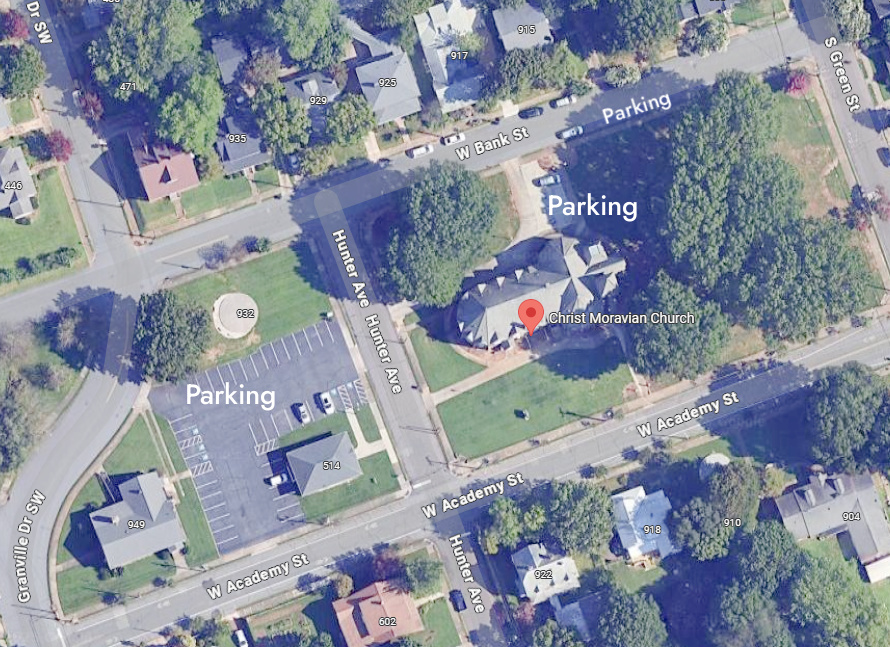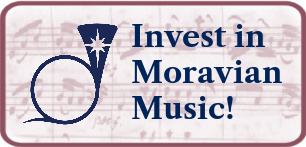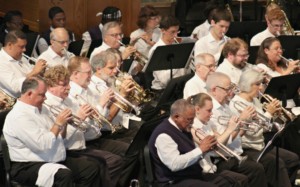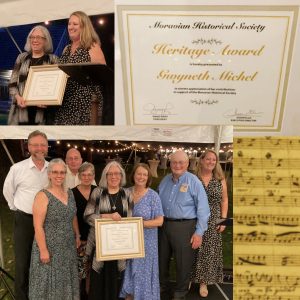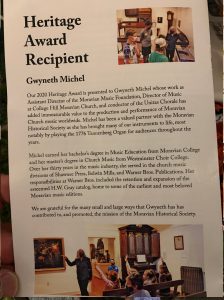BLOG posts of
Barbara Strauss, GemeinKat Cataloging Project Manager
I started working at the Moravian Music Foundation on December 1, 2014 as the Cataloging Project Manager —

newly retired from Cleveland State University’s Michael Schwartz Library. I’ll tell you the story in a nutshell; the blog is intended to spin out the whole story in two paths. One path will be somewhat technical and of interest to music librarians and the other path is my personal journey from graduate student at the University of Arizona to staff member at the Foundation in Winston-Salem, North Carolina. -Barbara Strauss
Her story…

“Full circle” may seem a strange name for part of a blog about Moravian Music archival and music resources, but for me it is encapsulates a personal journey.
The nutshell: The beginning of the circle for me started in 1974 as a graduate student in music history at the University of Arizona. For my Master’s thesis I selected a topic in Moravian Music because it met the advice from my mentor at Arizona, Dr. James Anthony: 1) I had to have access to primary source documents and 2) it had to be a project that I could live with for a long time. From the list of topics provided by Dr. Karl Kroeger, then director of the Moravian Music Foundation, I chose to work on a small book, A register of music performed in concert, Nazareth, Pennsylvania from 1796 to 1845 (in German). My objective was to reconstruct the extraordinary repertoire performed by the Collegium Musicum in Nazareth based on existing manuscripts in the archives at the Archives of the Moravian Church, Northern Province. I spent a significant amount of time in Bethlehem, Pennsylvania at the archives and the offices of the Moravian Music Foundation matching entries in the Verzeichniss to musical works in the archives by combing through newly minted catalog cards or earlier inventories. I say “newly minted catalog cards” because the Foundation had received a generous grant from the National Endowment for the Humanities to catalog the musical manuscripts in Bethlehem, PA and Winston-Salem, NC. So, I worked alongside Richard Claypoole and Robert Steelman. They manually produced the catalog cards for each work, describing in exquisite detail everything that could be recorded about those thousands of works. I finished the thesis, although Claypoole and Steelman had not yet cataloged the manuscripts from Nazareth.
I believe the project was the most difficult and mind-expanding work of my life. Technically, the Verzeichniss is, of course, written in 18th century German script, was cryptic with abbreviations and short phrases that come with a weekly record of activities, and most importantly, the Collegium Musicum Nazareth library no longer exists.
Back to the nutshell — after graduation from Arizona I entered another graduate program in library of science at the University of Wisconsin-Madison. Serving as a music cataloger, paraprofessional then professional, at Mills Music Library, provided the day job; however, I still worked on the Verzeichniss, updating my manuscript with new catalog numbers after Claypoole and Steelman completed the NEH cataloging project.
Over the years, the Moravian Music Foundation invited me to join the Board of Trustees, which gave me another opportunity to encourage the Trustees and staff to use technology to bring the Foundation’s treasures to light. We talked about everything from email, desktop computers, and fundraising software to online cataloging for the collections. My heart was always advocating for conversion of the manuscript card catalog to records which could be discovered online. In 2004 among the long range goals was the conversion of the catalogs. As a Trustee or as a library consultant, I worked with The Rev. Dr. Nola Reed Knouse to chip away at the “big hairy audacious goal” of converting the catalogs. In 2014 the Trustees committed a portion of the significant bequest to the “cataloging project”.
So, what started for me in 1974, watching Richard Claypoole and Robert Steelman create catalog cards for the 18th century music manuscripts, has come full circle. I am now leading the project that will bring those same manuscript descriptions online and discoverable to the world.
